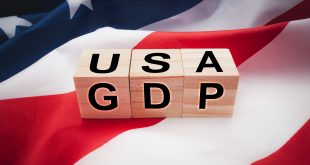The Trump administration’s aggressive tariff policies are reshaping the U.S. economy, sending ripples through commodity markets from soybeans to silver. These measures aim to overhaul global trade dynamics, but their outcomes remain uncertain—potentially transformative or destabilizing. Markets are reacting swiftly, pricing in risks and opportunities. This article explores how tariffs are impacting key U.S. commodities, why these shifts matter, and what to expect moving forward.
Soybeans: Weathering the Storm
Soybeans, a cornerstone of U.S. agriculture, are no strangers to trade disputes. Past tensions with China saw prolonged negotiations, with grain prices bearing the brunt. Today’s tariffs have prompted markets to preemptively price in negative impacts, stabilizing soybean prices around a multi-decade trendline near $9.30. A sharp rally seems unlikely, but this support level should hold firm. The resilience stems from traders’ experience navigating similar disruptions, suggesting a cautious but steady outlook for soybeans despite global trade frictions.
Crude Oil: Demand Under Pressure
Tariffs on Canadian (10%) and Mexican (25%) oil imports are less about supply constraints—U.S. production can largely meet domestic needs—and more about demand destruction. Economic uncertainty fuels recession fears, dampening energy consumption. Crude oil prices, moving in tandem with a stronger U.S. dollar rather than inversely, signal underlying weakness. Historically, oil struggled below $65 during previous tariff-heavy periods. If bearish trends persist, prices could test $52 or even $48, echoing sharp sell-offs seen in 2014 and 2020. OPEC’s earlier efforts to prop up prices near $65 are fading, leaving oil vulnerable to further declines.
Natural Gas: A Surprising Rebound
Natural gas prices recently dipped below $2.00, pressured by mild weather, oversupply, and retaliatory tariffs on U.S. liquefied natural gas from countries like China. Yet, a robust rally has emerged, driven by technical factors: prices retested a December breakout level, now acting as support, while the relative strength index hit oversold territory during a bullish seasonal period. A close above the 200-day moving average near $3.40 could confirm a trend reversal. This resilience suggests natural gas may defy tariff-related headwinds, offering a potential bright spot in the commodity landscape.
Coffee and Silver: Volatility and Limits
Coffee futures, already volatile due to drought and disease threatening production, face added pressure from potential U.S. tariffs. However, exemptions for non-domestic crops like coffee could temper impacts. Still, historical patterns—two-month rallies with overbought signals—hint at a possible pullback. Silver, meanwhile, struggles as both a precious and industrial metal. Resistance near $34-$35 has capped gains, and without a breakout above $35.50, prices may slide below $20. Tariff-induced economic slowdowns exacerbate silver’s challenges, making a near-term recovery unlikely.
The tariff-driven upheaval in commodity markets underscores broader economic uncertainties. While soybeans show resilience and natural gas hints at recovery, oil and silver face significant headwinds. Coffee’s trajectory hinges on policy clarity. As trade dynamics evolve, markets will continue to adapt, but the path forward demands vigilance. Policymakers, particularly Treasury Secretary nominee Scott Bessent and Commerce Secretary designate Howard Lutnick, must balance bold restructuring with economic stability to mitigate risks and seize opportunities in this volatile landscape.

 Noor Trends News, Technical Analysis, Educational Tools and Recommendations
Noor Trends News, Technical Analysis, Educational Tools and Recommendations




